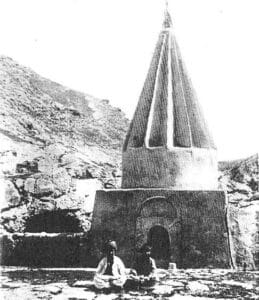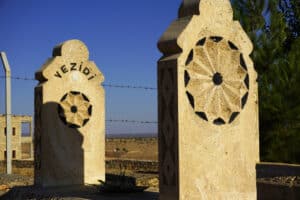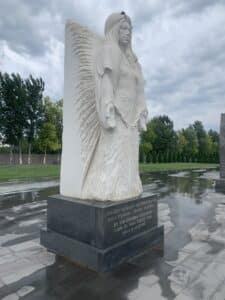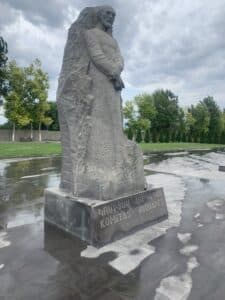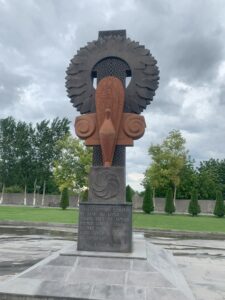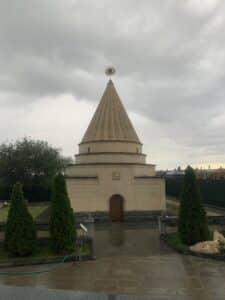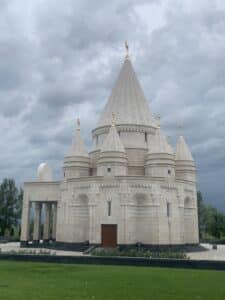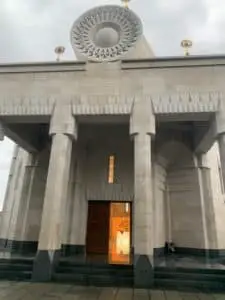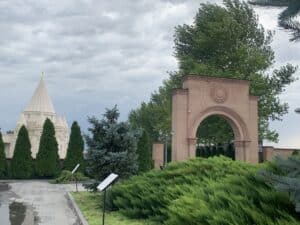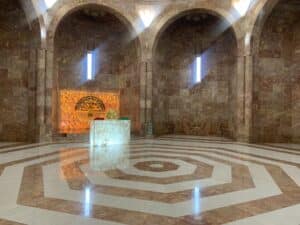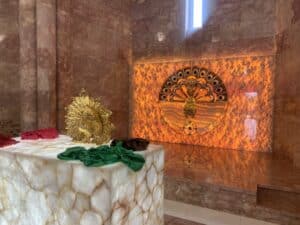While I was studying in Armenia I was able to request a trip to visit the Yazidi temples in Aknalich, Armenia. I arranged this through Hasmik, the guide that led much of the cultural portion for our SRAS study abroad program in Yerevan. I am fascinated with different religious groups, and this was a great opportunity to learn more about a particularly interesting group.
Who are the Yazidis?
The Yazidis are a Kurdish speaking ethnic group that originated in Lalish, Iraq. They teach that their monotheistic religion began nearly 7000 years ago, making it one of the world’s oldest religions. It remained fluid, however, absorbing elements of old Iranian and Mesopotamian religions, Zoroastrianism, Judaism, Gnosticism, Christianity, Islam and others. While being categorized as a syncretic religion, they became a fixed religion in the 11th -12th centuries. The main belief of the Yazidis is that God (who they refer to as Xwade) created the world and left it in the care of a heptad of angels, the highest being the Peacock Angel (Tause Malak).
Today, Yazidis are the largest ethnic minority in Armenia (constituting about 1% of the population). They settled there in the 19th and 20th centuries to flee persecution from the Ottoman Turks and Sunni Kurds, who targeted them alongside other non-Muslims such as Armenians, Greeks, and Assyrians. There is still discussion among westerners, Kurds, and Yazidis themselves about if they should be considered a subgroup of Kurds, or a separate ethnic group (as they are recognized according to the official Armenian census).
Throughout their history Yazidis were frequently targeted and persecuted by Muslim rulers. The most often cited justification for this is that Iblis (Satan) in Islamic tradition faces a trial from God that parallels the trial faced by Tause Malak. Both figures are told that creation should bow to Adam and both initially refuse this command. However in the Yazidi legend, Tause Malak is eventually redeemed. Despite this, the Yazidis have often been labelled as “devil worshippers” by outsiders. Yazidis were also excluded from dhimmi status (protected minority) under Islamic rule and therefore did not have the same protections as Christians and Jews guaranteed by shariah.
The persecution that the Yazidis face has not ended in the modern era. In 2014, the Islamic State of Iraq and the Levant (ISIS/Daesh) took control of the Sinjar region of Iraq, and began a genocide against the Yazidi population. Men were executed and women were forced into sexual slavery. The genocide gained international attention and eventually helped lead to the US intervention against IS in Iraq.
Seeing the Yazidi Temples of Aknalich, Armenia
Getting to Aknalich in the Armavir province from Yerevan takes about an hour’s drive. My classmates and I were able to meet with Said, who is Hasmik’s contact in the Yazidi community, while we traveled to the village. Said answered many questions about his religion and community.
When reaching the temples we first walked through a statue park that depicts major historical events and heroes of the Yazidi nation. This includes some non-Yazidis as well, such as Komitas Vardapet, an Armenian musician who recorded the first collection of Yazidi folk songs. There is a statue dedicated to the cohabitation of the Yazidi faith and the Armenian Apostolic Church: an Armenian cross intertwined with the Yazidi holy symbol, a sun. It also includes modern heroes such as Nadia Murad, a Yazidi who escaped ISIS captors in 2014 and gave her testimony to the United Nations Security Council in 2015. She was awarded the Nobel Peace Prize and is one of the most important advocates for the Yazidi people. In 2018 Nadia’s Initiative was founded to assist victims of mass atrocities.
At the end of the statue park stands a stone arch leading to a yard where the temples stand. We were only able to enter the larger one, Quba Mêrê Dîwanê as the Ziarat Temple was locked at the time. Even only seeing it from the outside, however, the Ziarat Temple is interesting to see. Completed in 2012, the Ziarat Temple, also known as the Holy Sultan Ezid Temple, was the first modern, functioning Yazidi temple outside of Lalish. Its modest design is essentially identical to many others from the Yazidi homelands, with a squat rectangular base and conical top reminiscent of the Yazidi holy symbol, a multi-pointed sun, which is also represented just above the main entrance.
Several meters away from the Ziarat Temple, in 2019, construction was completed for the Quba Mêrê Dîwanê, also known as the Temple of Tause Malak and the Seven Angels. Its name translates roughly as “All Will Come Together.” The design of the building is also based on the temples from Lalish, although it has been updated considerably for aesthetics and comfort. As the largest Yazidi temple in the world, its main rectangular base is raised to almost twice the height of that of the Ziarat Temple.
The main entrance is protected by a large awning. The stones used to create the building were brought in from Iran and, after the construction, the builders noticed there was a shape of a peacock in the bricks at one of the southeastern corners of the building. Surrounding the conical top are an additional seven smaller cones and the Yazidi sun over the entrance is plated in gold. The building was funded mostly by a successful Yazidi businessman and philanthropist from Armenia, Mirza Sloian, and designed by Artak Ghulyan, one of Armenia’s most prominent architects. Amazingly, Mirza Sloian lived just long enough to see the temple opened and died just days later. He had also spent millions on helping Yazidis escape genocide in Iraq and in trying to organize Yazidi conferences and media to better address and publicize issues of importance to the group. The temple itself is envisioned as a center piece making Aknalich a major Yazidi cultural center. At the same time, construction was started on a convention center, museum and religious seminary in the village.
The main entrance to Quba Mêrê Dîwanê is on the eastern side of the building. Here, one must remove their shoes to enter. The interior is circular, walled in brown marble and features a few peacock motifs on an otherwise simple and open design. At the western interior end there is an image of Tause Malak with an altar in front. On the altar there are scarves from Iraq, which according to our guide Said, one makes a wish when they tie a knot. The wish is granted when another person arrives to unknot it and make their own.
Visiting Aknalich and the Yazidi temples there was a fascinating and unique experience for my classmates and I while studying abroad in Yerevan. Visiting this location is learning about the Yazidis and their culture is something that I would recommend for all travelers to this region.
You Might Also Like
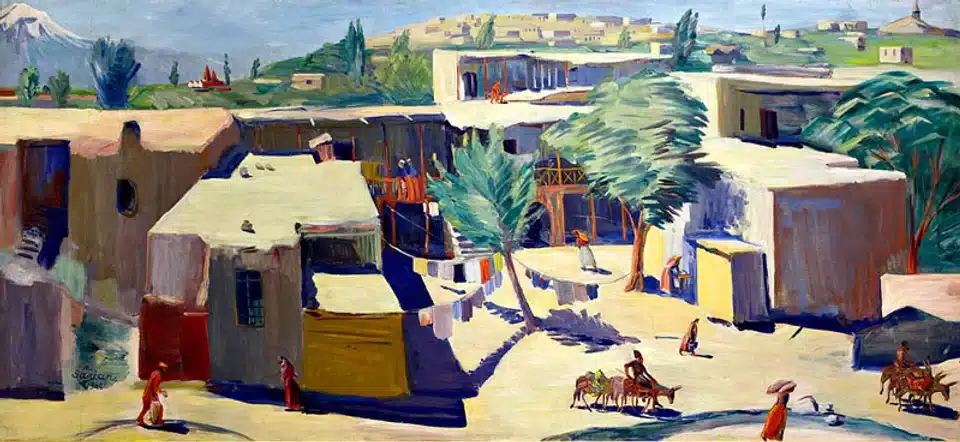
A Visit to the Martiros Saryan House-Museum in Yerevan
The Martiros Saryan House-Museum is located in the three-story former home of Martiros Saryan. Located just a 10-minute walk from Yerevan’s central Freedom Square, on a leafy street now named for the artist, the building is open to the public and used to display his art and celebrate his life. During my study abroad program […]
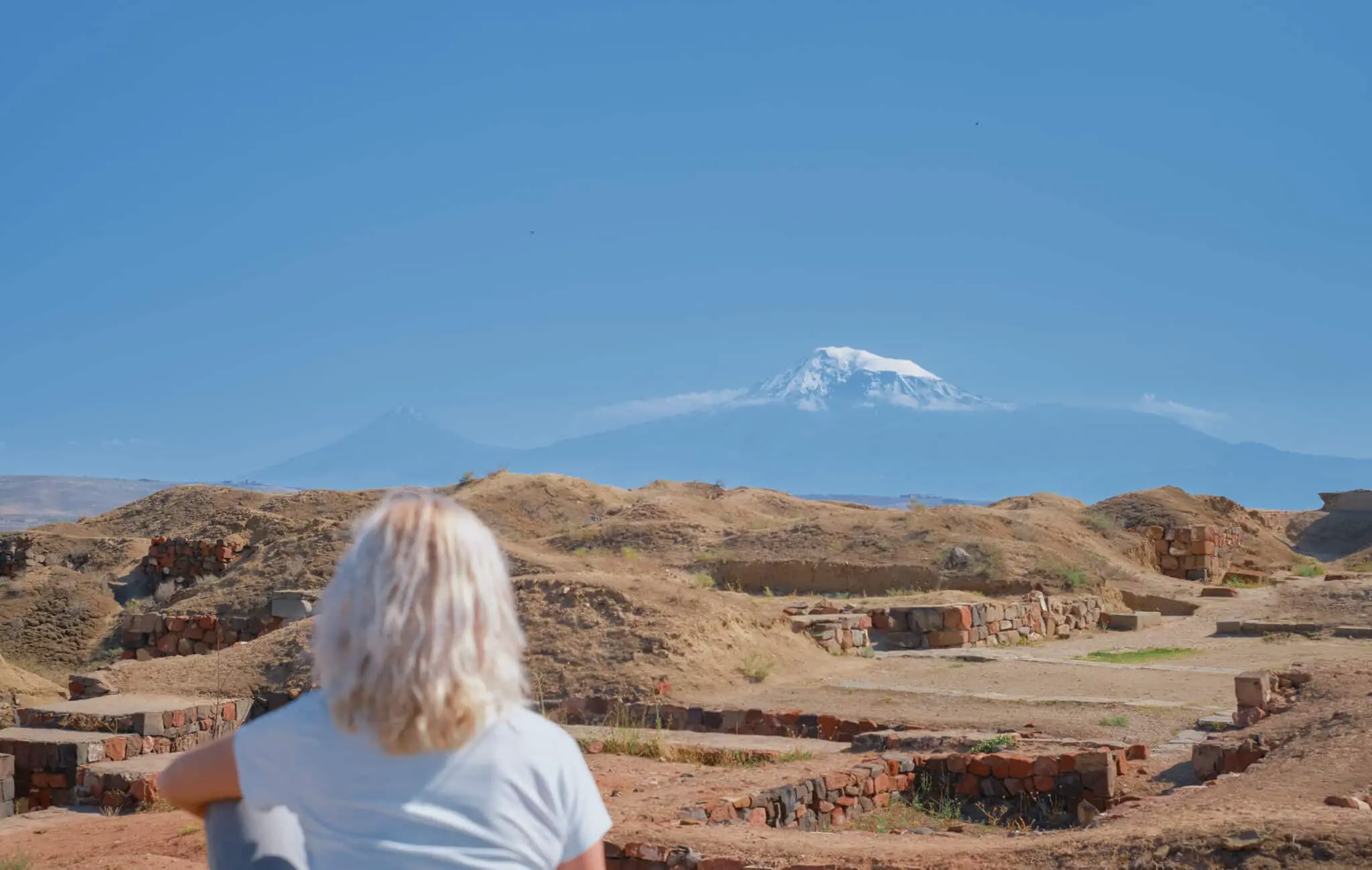
SRAS Visit to Erebuni Museum Complex and Archeological Ruins
The fortress of Erebuni, once the great capital of the mighty Uratu Kingdom, is located on the outskirts of Yerevan. The ruins of the citadel are flanked on one side by quiet mountains – their rocky slopes reaching up toward the hot summer sun. On the other side is Yerevan and the Ararat plain. The noise of […]
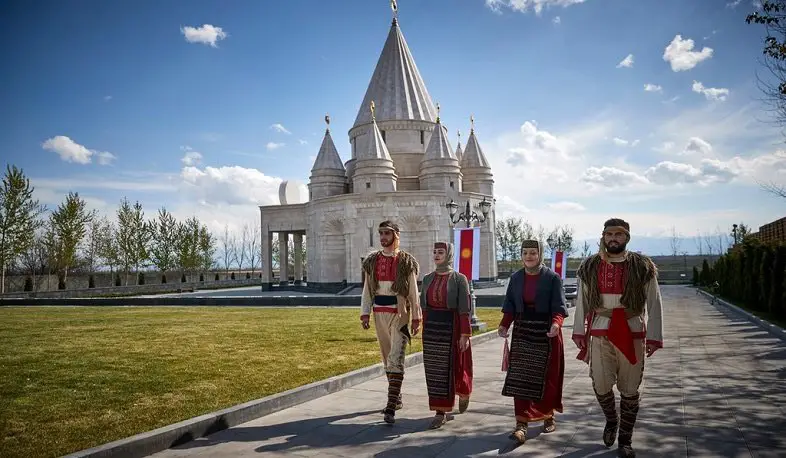
Yazidi Temple in Aknalich, Armenia
While I was studying in Armenia I was able to request a trip to visit the Yazidi temples in Aknalich, Armenia. I arranged this through Hasmik, the guide that led much of the cultural portion for our SRAS study abroad program in Yerevan. I am fascinated with different religious groups, and this was a great […]
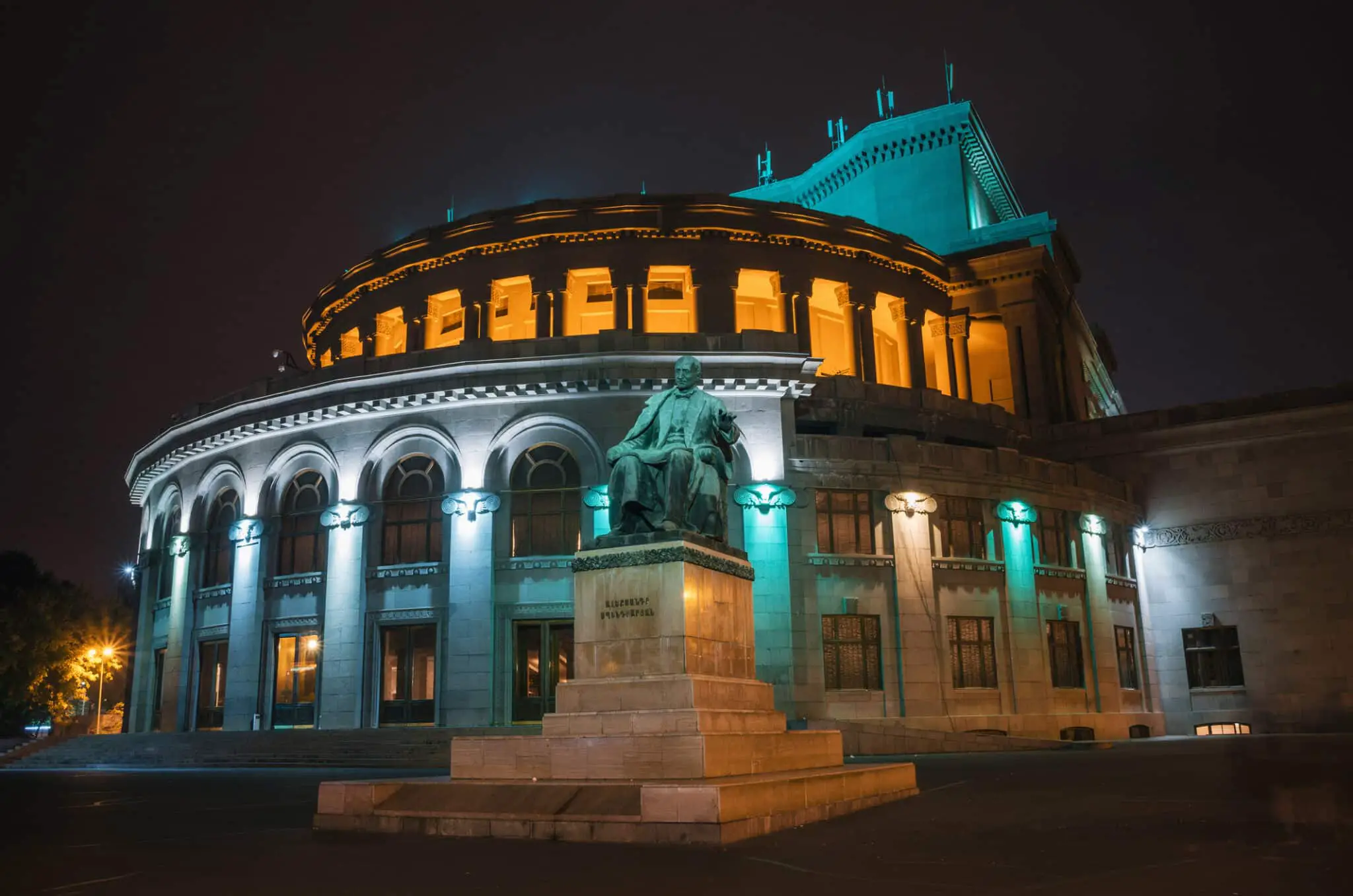
The Armenian National Academic Theater of Opera and Ballet
In the heart of Armenia’s capital city Yerevan, stands the Armenian National Academic Theater of Opera and Ballet and the Aram Khachaturian Concert Hall, simply known as “The Opera” by locals. Built in the early twentieth century, this cultural hub showcases a blend of traditional Armenian architecture and contemporary design representative of its diverse repertoire. […]
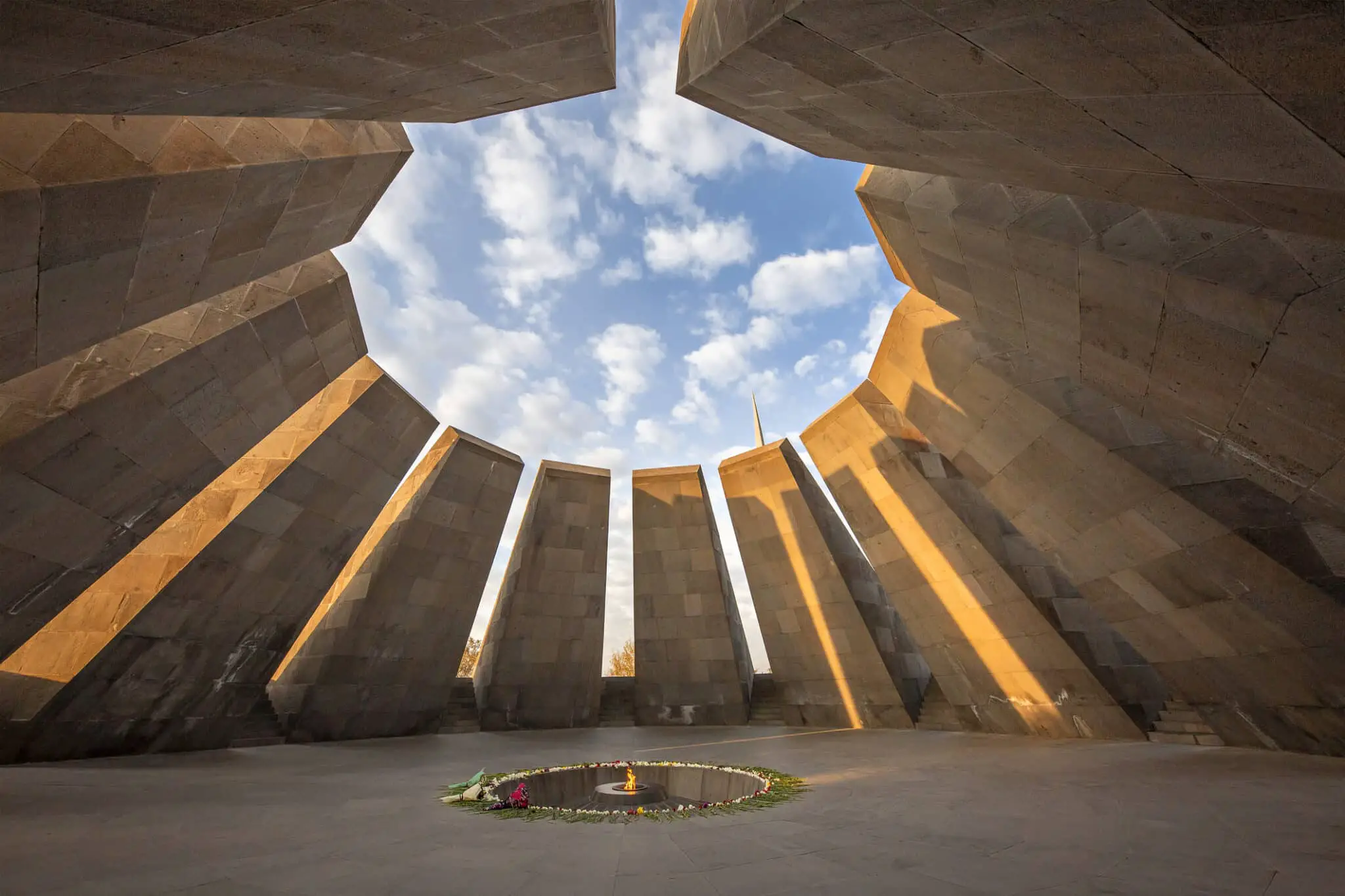
Yerevan Museums: The Best in History and Art
The following is a brief introduction to some of the best Yerevan museums for history and art. As SRAS has recently launched study programming in Armenia, MuseumStudiesAbroad.org is also now opening a new region that we hope to fill with museum reviews and artist biographies! History Museum of Armenia The History Museum of Armenia holds […]


